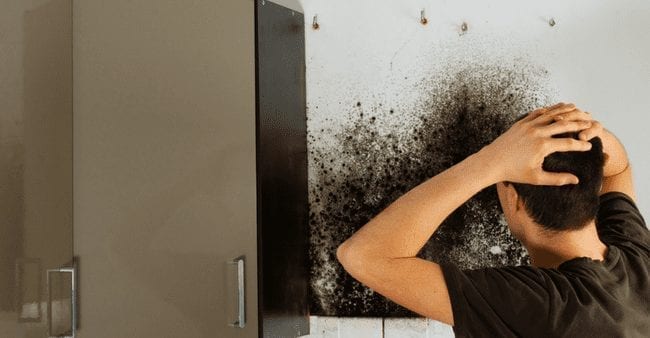Six Ways to Identify Covert Water Line Leaks Efficiently
Six Ways to Identify Covert Water Line Leaks Efficiently
Blog Article
This great article which follows on the subject of Finding hidden leaks is fairly enjoyable. Read it for yourself and see what you think of it.

Early discovery of dripping water lines can minimize a possible disaster. In addition to saving you money, it will certainly reduce the worry and also aggravation. The minute you locate a leakage, calling your plumber for repair services is the most effective remedy. Some tiny water leaks may not be noticeable. If you can not discover it with your naked eyes, right here are some hacks that aid.
1. Examine the Water Meter
Every home has a water meter. Examining it is a proven way that helps you discover leaks. For beginners, switch off all the water sources. Make certain nobody will certainly flush, use the tap, shower, run the washing maker or dishwashing machine. From there, most likely to the meter and watch if it will certainly transform. Because nobody is using it, there must be no movements. If it relocates, that shows a fast-moving leak. Furthermore, if you find no changes, wait an hour or two and check back once again. This suggests you may have a slow-moving leak that might even be underground.
2. Examine Water Intake
Analyze your water expenses as well as track your water consumption. As the one paying it, you must observe if there are any type of discrepancies. If you detect sudden changes, in spite of your consumption being the same, it means that you have leaks in your plumbing system. Keep in mind, your water expense must fall under the very same variety monthly. An abrupt spike in your bill indicates a fast-moving leakage.
A steady rise every month, even with the very same practices, shows you have a slow leak that's additionally slowly rising. Call a plumber to completely examine your building, particularly if you really feel a cozy location on your floor with piping underneath.
3. Do a Food Coloring Examination
When it comes to water consumption, 30% comes from toilets. If the shade in some way infiltrates your bowl during that time without flushing, there's a leakage in between the tank as well as dish.
4. Asses Outside Lines
Do not neglect to inspect your outdoor water lines too. Examination spigots by connecting a garden hose. Should water leak out of the connection, you have a loose rubber gasket. Change this and also ensure all links are limited. It will certainly help get it expertly examined and also preserved yearly if you have actually obtained a sprinkler system. One tiny leak can waste tons of water as well as spike your water bill.
5. Examine the situation and inspect
House owners need to make it a habit to examine under the sink counters and also inside closets for any kind of bad odor or mold development. These 2 red flags suggest a leak so punctual attention is required. Doing routine assessments, even bi-annually, can save you from a major issue.
If you know your residence is currently old, maintain a careful eye on your heaters, tubes, pipes etc. Check for stainings as well as damaging as many home appliances and also pipes have a life span. They will certainly additionally naturally degrade due to tear as well as wear. Don't wait for it to escalate if you believe leaking water lines in your plumbing system. Call a specialist plumber as soon as possible so you don't wind up with a horrible mess in your house.
Early discovery of dripping water lines can mitigate a possible disaster. Some small water leaks might not be visible. Inspecting it is a surefire method that helps you uncover leaks. One little leak can throw away tons of water and also spike your water costs.
If you think leaking water lines in your plumbing system, do not wait for it to escalate.
WARNING SIGNS OF WATER LEAKAGE BEHIND THE WALL
PERSISTENT MUSTY ODORS
As water slowly drips from a leaky pipe inside the wall, flooring and sheetrock stay damp and develop an odor similar to wet cardboard. It generates a musty smell that can help you find hidden leaks.
MOLD IN UNUSUAL AREAS
Mold usually grows in wet areas like kitchens, baths and laundry rooms. If you spot the stuff on walls or baseboards in other rooms of the house, it’s a good indicator of undetected water leaks.
STAINS THAT GROW
When mold thrives around a leaky pipe, it sometimes takes hold on the inside surface of the affected wall. A growing stain on otherwise clean sheetrock is often your sign of a hidden plumbing problem.
PEELING OR BUBBLING WALLPAPER / PAINT
This clue is easy to miss in rooms that don’t get much use. When you see wallpaper separating along seams or paint bubbling or flaking off the wall, blame sheetrock that stays wet because of an undetected leak.
BUCKLED CEILINGS AND STAINED FLOORS
If ceilings or floors in bathrooms, kitchens or laundry areas develop structural problems, don’t rule out constant damp inside the walls. Wet sheetrock can affect adjacent framing, flooring and ceilings.
https://www.servicemasterbyzaba.com/blog/how-to-detect-water-leakage-in-walls/

I'm very excited about Detecting hidden plumbing leaks and I am hoping you enjoyed the blog entry. Sharing is caring. Helping people is fun. I appreciate reading our article about Finding hidden leaks.
For fast relief, call! Report this page